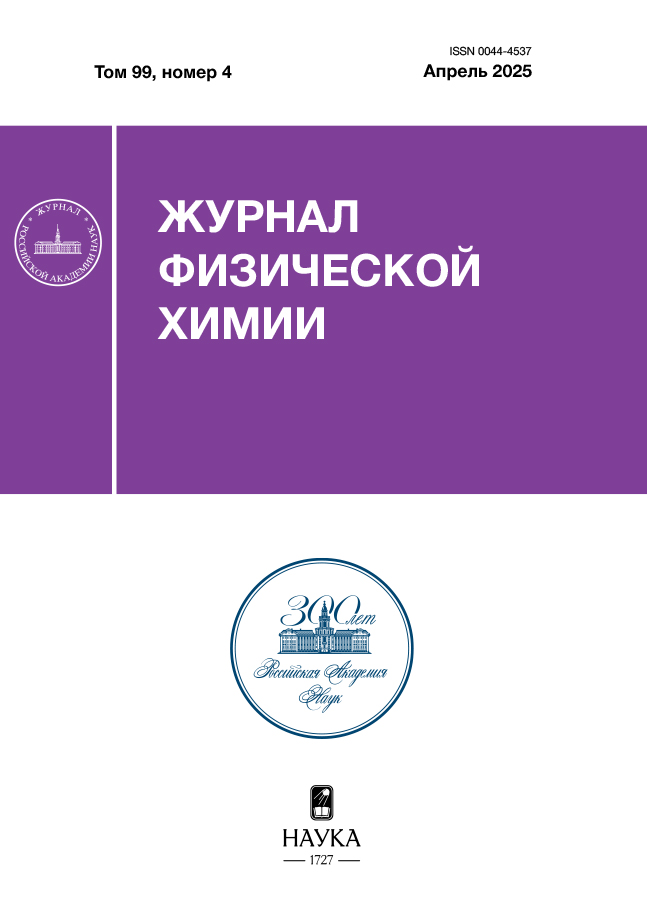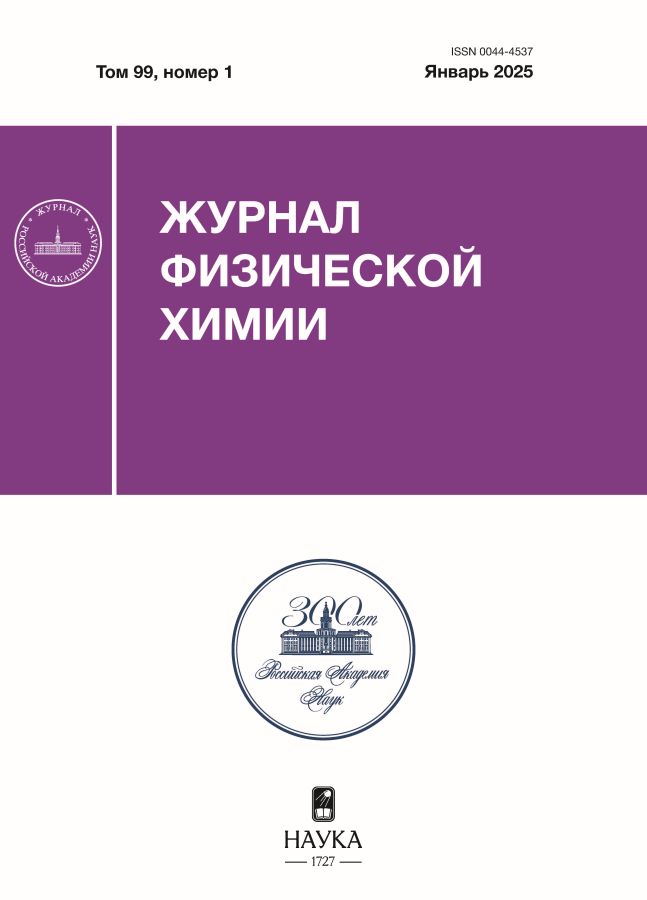Применение молекулярного подобия для оценки точности предсказания газохроматографических индексов удерживания с помощью глубокого обучения
- Авторы: Матюшин Д.Д.1, Шолохова А.Ю.1, Хрисанфов М.Д.1,2, Боровикова С.А.1
-
Учреждения:
- ФГБУН Институт физической химии и электрохимии им. А. Н. Фрумкина РАН
- МГУ им. М. В. Ломоносова
- Выпуск: Том 99, № 1 (2025)
- Страницы: 144-152
- Раздел: ФИЗИЧЕСКАЯ ХИМИЯ ПРОЦЕССОВ РАЗДЕЛЕНИЯ. ХРОМАТОГРАФИЯ
- Статья получена: 01.06.2025
- Статья опубликована: 17.04.2025
- URL: https://permmedjournal.ru/0044-4537/article/view/681877
- DOI: https://doi.org/10.31857/S0044453725010146
- EDN: https://elibrary.ru/EHWTZH
- ID: 681877
Цитировать
Полный текст
Аннотация
При предсказании индексов удерживания с помощью глубокого обучения обычно нет способа оценить надежность предсказания для конкретной молекулы. В данной работе на примере неподвижных фаз на основе полиэтиленгликоля и базы данных NIST 17 показано, что в среднем предсказание тем точнее, чем более близкая по структуре к соединению, для которого выполняется предсказание, молекула находилась в обучающем наборе данных. Сходство по Танимото “молекулярных отпечатков пальцев” ECFP – наиболее подходящий для этой задачи алгоритм вычисления молекулярного подобия из четырех рассмотренных. Показано, что для ряда продуктов трансформации несимметричного диметилгидразина, структура которых была установлена с использованием такого предсказания, оно могло быть весьма ненадежным.
Полный текст
Об авторах
Д. Д. Матюшин
ФГБУН Институт физической химии и электрохимии им. А. Н. Фрумкина РАН
Email: shonastya@yandex.ru
Россия, 119071, Москва
А. Ю. Шолохова
ФГБУН Институт физической химии и электрохимии им. А. Н. Фрумкина РАН
Автор, ответственный за переписку.
Email: shonastya@yandex.ru
Россия, 119071, Москва
М. Д. Хрисанфов
ФГБУН Институт физической химии и электрохимии им. А. Н. Фрумкина РАН; МГУ им. М. В. Ломоносова
Email: shonastya@yandex.ru
Россия, 119071, Москва; 119991, Москва
С. А. Боровикова
ФГБУН Институт физической химии и электрохимии им. А. Н. Фрумкина РАН
Email: shonastya@yandex.ru
Россия, 119071, Москва
Список литературы
- Tarján G., Nyiredy S., Györ M. et al. // J. of Chromatography A. 1989. V. 472. P. 1. https://doi.org/10.1016/S0021-9673(00)94099-8
- Franke J.-P., Wijsbeek J., De Zeeuw R.A. // J. of Forensic Sciences. 1990. V. 35. № 4. P. 813. https://doi.org/10.1520/JFS12893J
- Zellner B.A., Bicchi C., Dugo P. et al. // Flavour and Fragrance J. 2008. V. 23. № 5. P. 297–314. https://doi.org/10.1002/ffj.1887
- Milman B.L., Zhurkovich I.K. // TrAC Trends in Analytical Chemistry. 2016. V. 80. P. 636–640. https://doi.org/10.1016/j.trac.2016.04.024
- Vinaixa M., Schymanski E.L., Neumann S. et al. // TrAC Trends in Analytical Chemistry. 2016. V. 78. P. 23. https://doi.org/10.1016/j.trac.2015.09.005
- Matyushin D.D., Sholokhova A.Yu., Karnaeva A.E. et al. // Chemometrics and Intelligent Laboratory Systems. 2020. V. 202. P. 104042. https://doi.org/10.1016/j.chemolab.2020.104042
- Schymanski E.L., Meringer M., Brack W. // Analytical Chemistry. 2011. V. 83. № 3. P. 903. https://doi.org/10.1021/ac102574h
- Dossin E., Martin E., Diana P. et al. // Analytical Chemistry. 2016. V. 88. № 15. P. 7539–7547. https://doi.org/10.1021/acs.analchem.6b00868
- Sholokhova A.Yu., Matyushin D.D., Grinevich O.I. et al. // Molecules. 2023. V. 28. № 8. P. 3409. https://doi.org/10.3390/molecules28083409
- Su Q.-Z., Vera P., Salafranca J. et al. // Resources, Conservation and Recycling. 2021. V. 171. P. 105640. https://doi.org/10.1016/j.resconrec.2021.105640
- Su Q.-Z., Vera P., Nerín C. et al. // Resources, Conservation and Recycling. 2021. V. 167. P. 105365. https://doi.org/10.1016/j.resconrec.2020.105365
- Sholokhova A.Yu., Grinevich O.I., Matyushin D.D. et al. // Chemosphere. 2022. V. 307. P. 135764. https://doi.org/10.1016/j.chemosphere.2022.135764
- Matyushin D.D., Buryak A.K. // IEEE Access. 2020. V. 8. P. 223140. https://doi.org/10.1109/ACCESS.2020.3045047
- Debus B., Parastar H., Harrington P. et al. // TrAC Trends in Analytical Chemistry. 2021. V. 145. P. 116459. https://doi.org/10.1016/j.trac.2021.116459
- Dong S., Wang P., Abbas K. // Computer Science Review. 2021. V. 40. P. 100379. https://doi.org/10.1016/j.cosrev.2021.100379
- Matyushin D.D., Sholokhova A.Yu., Buryak A.K. // Intern. J. of Molecular Sciences. 2021. V. 22. № 17. P. 9194. https://doi.org/10.3390/ijms22179194
- Matyushin D.D., Sholokhova A.Yu., Buryak A.K. // J. of Chromatography A. 2019. V. 1607. P. 460395. https://doi.org/10.1016/j.chroma.2019.460395
- Anjum A., Liigand J., Milford R. et al. // Ibid. 2023. V. 1705. P. 464176. https://doi.org/10.1016/j.chroma.2023.464176
- Qu C., Schneider B.I., Kearsley A.J. et al. // Ibid. 2021. V. 1646. P. 462100. https://doi.org/10.1016/j.chroma.2021.462100
- Vrzal T., Malečková M., Olšovská J. // Analytica Chimica Acta. 2021. V. 1147. P. 64. https://doi.org/10.1016/j.aca.2020.12.043
- Geer L.Y., Stein S.E., Mallard W.G. et al. // J. of Chemical Information and Modeling. 2024. V. 64. № 3. P. 690–696. https://doi.org/10.1021/acs.jcim.3c01758
- Raymond J.W., Gardiner E.J., Willett P. // The Computer J. 2002. V. 45. № 6. P. 631–644. https://doi.org/10.1093/comjnl/45.6.631
- Bender A., Glen R.C. // Organic & Biomolecular Chemistry. 2004. V. 2. № 22. P. 3204. https://doi.org/10.1039/B409813G
- Morehouse N.J., Clark T.N., McMann E.J. et al. // Nature Communications. 2023. V. 14. № 1. P. 308. https://doi.org/10.1038/s41467-022-35734-z
- Rogers D., Hahn M. // J. of Chem. Inform. and Modeling. 2010. V. 50. № 5. P. 742. https://doi.org/10.1021/ci100050t
- Hoo Z.H., Candlish J., Teare D. // Emergency Medicine J. 2017. V. 34. № 6. P. 357. https://doi.org/10.1136/emermed-2017-206735
- Polo T.C.F., Miot H.A. // J. Vascular Brasileiro. 2020. V. 19. P. e20200186. https://doi.org/10.1590/1677-5449.200186
- Popov M.S., Ul’yanovskii N.V., Kosyakov D.S. // Microchemical J. 2024. V. 197. P. 109833. https://doi.org/10.1016/j.microc.2023.109833
Дополнительные файлы
















